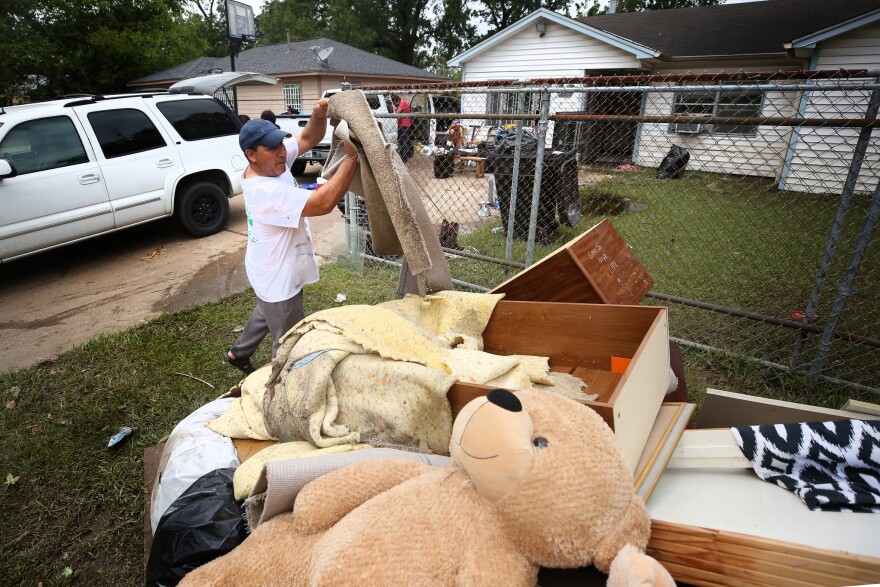Harvey was a big storm, but what if it's judged by the amount of trash?
“This is, by far, the largest disaster we’ve seen,” said Kurt Thormahlen, general manager of DRC Emergency Services. “I was talking to one of our subcontractors. He’s been in the business since 1972, and he’s never seen anything like this.”
DRC is a Galveston-based company that contracts with local governments ahead of disasters to help with cleanup. Thormahlen says it handles disasters nationwide – including cleanup from Irma – and the level of garbage in Texas is on another level.
“Just to put it into perspective, last year we responded to the Louisiana floods and removed about 3 million cubic yards throughout all of Louisiana,” he said. “We’re anticipating that there is that much just within the city of Houston. So, we’re thinking around 6 million cubic yards in just the city of Houston and Harris County.”
And that’s not including what’s anticipated from the coastal communities of Port Aransas, Aransas Pass, Rockport, Beaumont and others.
Gov. Greg Abbott suggested last week that the statewide total could be as high as 200 million cubic yards of stuff that now needs to be removed from communities.

Just what is a cubic yard? Visualize a conventional refrigerator with the fridge below and freezer up top. Now visualize 200 million refrigerators being stuffed into local landfills (eventually). Some of the piles are taken to temporary debris management sites or DMS.
“It helps us get the debris off the right of way faster,” Thormahlen said. “So, at the same time we’re hauling to a DMS, we’re hauling directly to a landfill.”
Some Houston residents are growing impatient with the pace of the removal, and so is Abbott, who said last week: “It is going fast, but, candidly, not fast enough.”
It has been nearly four weeks since Hurricane Harvey first made landfall in the state.
Thormahlen said crews are going as fast as they can. His company has more than 300 trucks out on the roads hauling debris – just one part of the trash-removal process after big storms.
“It’s a pretty slow process, but we’re rocking and rolling, seven days a week from sunup to sundown,” he said. “You should see quite a bit of it being removed pretty quickly.”
He said most debris piles – at least those in front of homes and businesses – should be gone by about the 45-day mark.




